Graph y=cos(1/2x) Use the form to find the variables used to find the amplitude, period, phase shift, and vertical shift Find the amplitude Amplitude Find the period of Tap for more steps The period of the function can be calculated using Replace with in the formula for periodIf cos^1((x^2y^2)/(x^2y^2)) = tan^1a prove that dy/dx = y/x Maths Continuity and DifferentiabilityCompute answers using Wolfram's breakthrough technology & knowledgebase, relied on by millions of students & professionals For math, science, nutrition, history
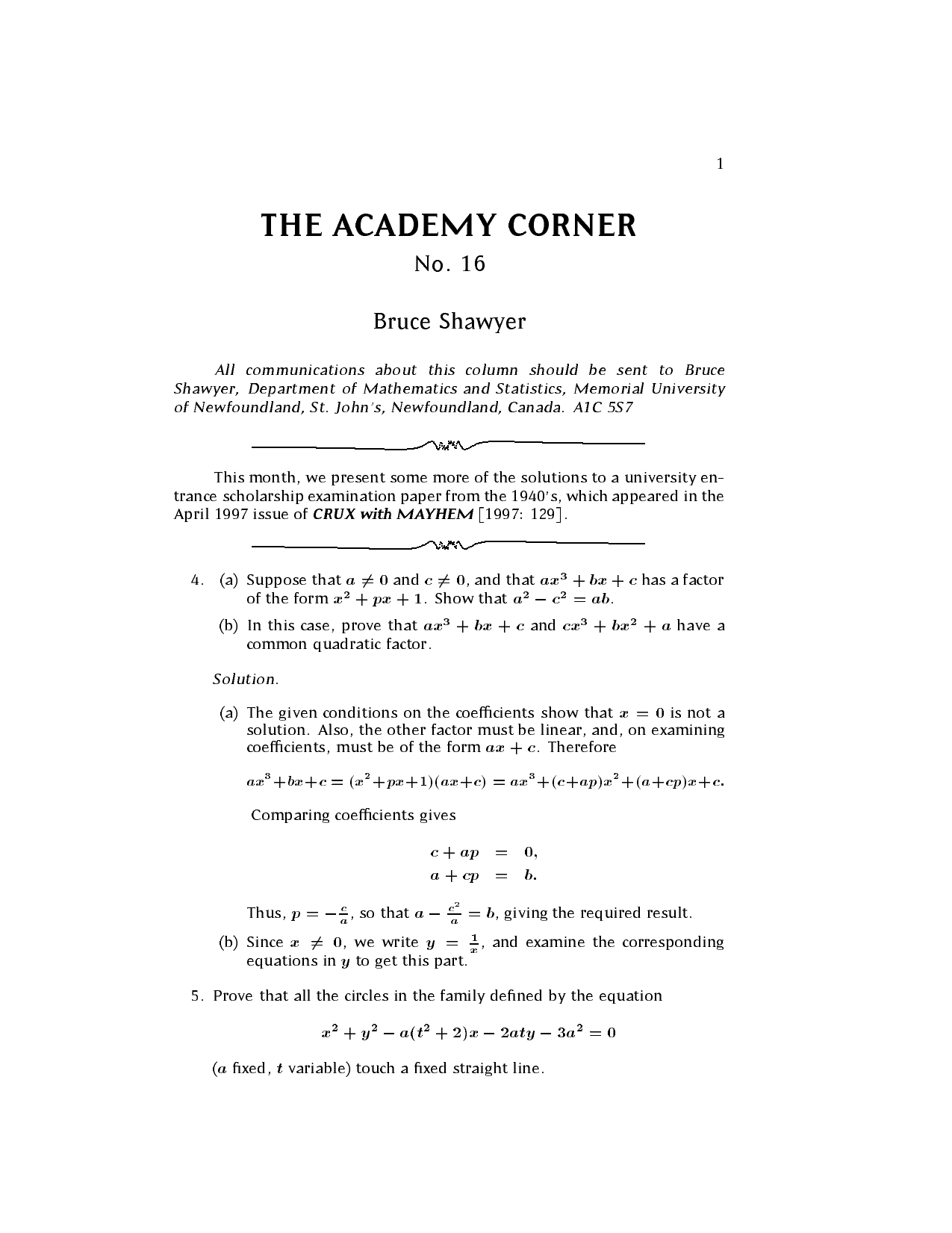
The Academy Corner Dong Thap In South Vietnam Portal Manualzz
Cos^-1(x^2-y^2/x^2 y^2)=tan^-1a
Cos^-1(x^2-y^2/x^2 y^2)=tan^-1a-Stack Exchange network consists of 176 Q&A communities including Stack Overflow, the largest, most trusted online community for developers to learn, share their knowledge, and build their careers Visit Stack ExchangeFind the Amplitude, Period, and Graph y=4cos(1/2)x Find the Amplitude, Period, and Graph y=cosx(pi/2) Find the Amplitude, Period, and Graph y=3sin(2x/3)(pi/6) Find the Amplitude, Period, and Graph y=2cos3x(pi/4)1
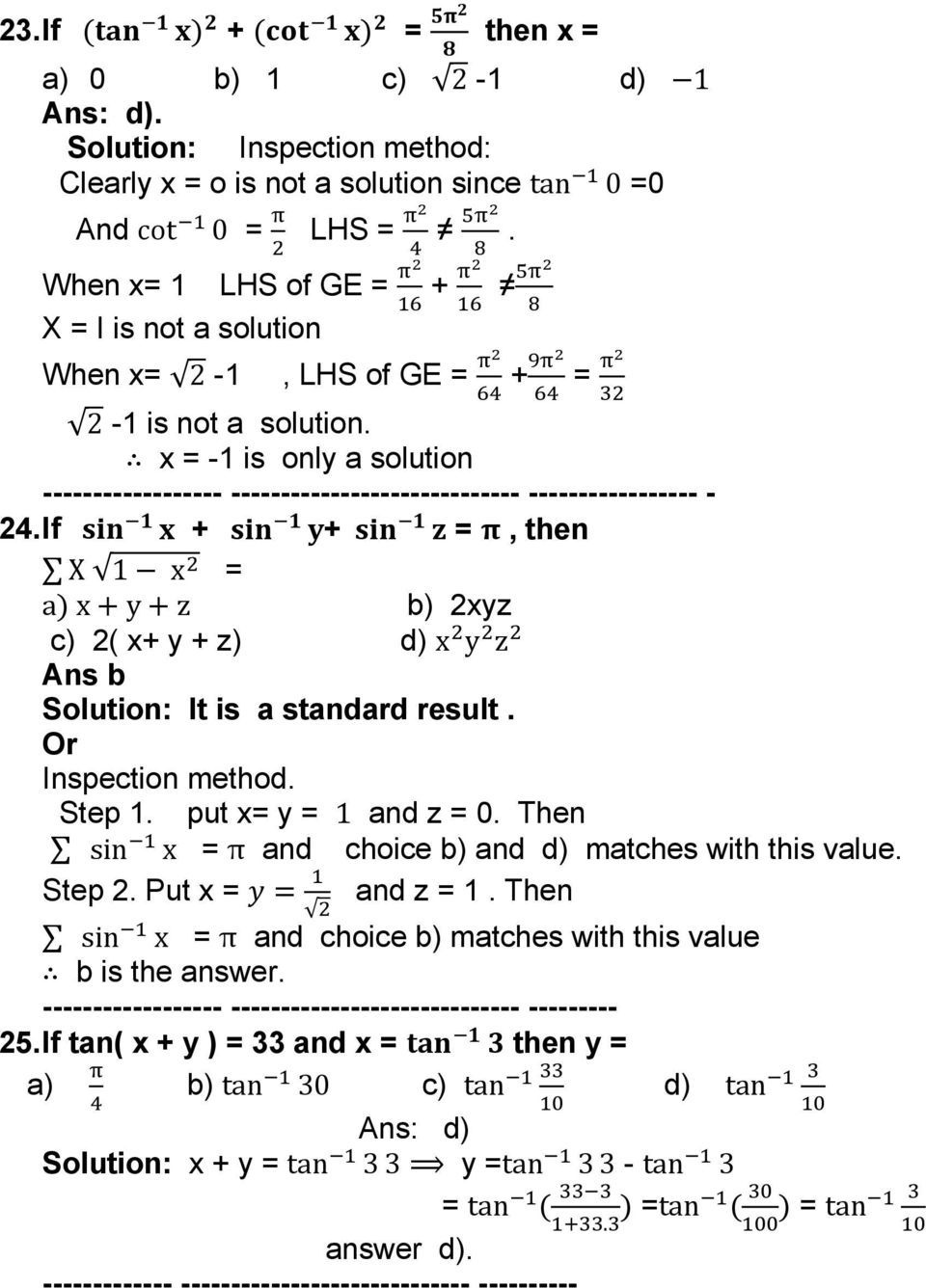


Inverse Trigonometric Functions General Solution Of Trigonometric Equations Pdf Dwrean Lhpsh
28/01/21 · (1) sin u (2) tan u (3) cos u (4) cot u Solution u = sin1 ((x 2 y 2)/(xy)) sin u = (x 2 y 2)/(xy)) = x 2 (1y 2 /x 2)/x(1y/x) = x(1y 2 /x 2)/(1y/x) = x f(y/x) This is a homogeneous function of degree 1 So by Euler's theorem`cos(tan^1 x) = 1/sqrt(1x^2)` If you need to prove the identity, then here are the steps First we will assume that arctanx = A ==> tanA = x But we know that tanA = `sinA/cosA ` = opposite sideGiven, x = cos1 1 1 t 2 and y = sin1 1 1 t 2 ⇒ x = tan1 t and y = tan1 t ∴ y = x ⇒ dy dx = 1
If sin 1 x sin 1 y = π/2 , then x 2 is equal to 1) y 2 2)(1y) 1/2 3) 1 – y 2 4) 0 Dear Tushar , We Know that Sin 1 x cos 1 x = /2 And Given Book a Trial With Our Experts Please choose valid name2 tan^1(tan x/2 tan y/2)= cos^1( cos x cos y / 1 cos x cos y)Dear student We have, sin A sin 2 A = 1 (1) ⇒ sin A = 1 – sin 2 A (2) Now cos 2 A coIf cos1 ( x2 y2 / x2 y2 ) = tan1 a, prove that dy/dx = y/x Maths Continuity and Differentiability
22/04/19 · If cos–1 (x2 – y2)/(x2 y2) = log a then (dy/dx) is (a) y2/x2 (b) y/x (c) x/y (d) x2/y2 Welcome to Sarthaks eConnect A unique platform where students can interact with teachers/experts/students to get solutions to their queriesCompute answers using Wolfram's breakthrough technology & knowledgebase, relied on by millions of students & professionals For math, science, nutrition, history, geography, engineering, mathematics, linguistics, sports, finance, music WolframAlpha brings expertlevel knowledge andCos x= (2cos y 1)/(2cos y) ={2(cos^2 y/2 sin^2 y/2) (cos^2 y/2 sin^2 y/2)} /{2(cos^2 y/2 sin^2 y/2) (cos^2 y/2 sin^2 y/2)} =(cos^2 y/2 3sin^ 2 y/2



If Cos 1 X 2 Y 2 X 2 Y 2 Tan 1 A Then Prove That Dy



If Cos 1 X 2 Y 2 X 2 Y 2 Tan 1 A Prove Than
$$ \tan \frac{x y}{2} = \frac{\sin x \sin y}{\cos x \cos y} $$ Not a difficult problem, I thought I would have rewritten the RHS using the sumtoproduct identities of sine and cosine`sqrt(1y^(2))dxsqrt(1x^(2))dy=0`A)`sin^(1)xcos^(1)y=c` B)`sin^(1)xsin^(1)y=c` C)`log(xsqrt(1x^(2)))=log(ysqrt(1y^(2)))c` D)`xy=c(1xy)`11/03/21 · Ex 53, 11 Find 𝑑𝑦/𝑑𝑥 in, 𝑦 = cos–1 ((1− 𝑥^2)/( 1 𝑥2 )) , 0 < x < 1 𝑦 = cos–1 ((1− 𝑥^2)/( 1 𝑥2 )) Putting x = tan θ y



Specialist Methods 12 Solutions Sine Triangle
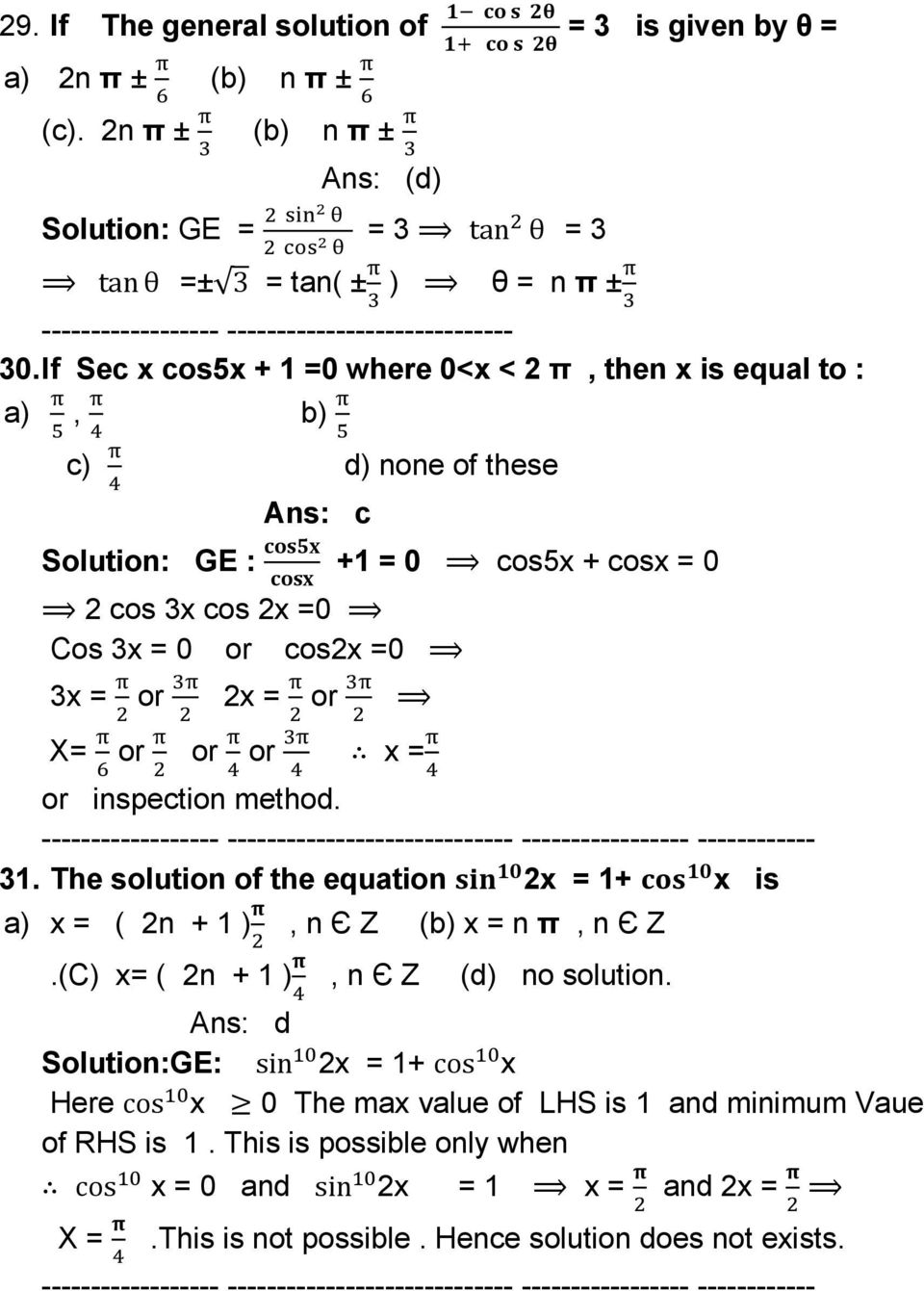


Inverse Trigonometric Functions General Solution Of Trigonometric Equations Pdf Dwrean Lhpsh
Question From NCERT Maths Class 12 Chapter 2 EXERCISE 22 Question – 13 INVERSE TRIGONOMETRIC FUNCTIONS CBSE, RBSE, UP, MP, BIHAR BOARDQUESTION TEXTFindShare It On Facebook Twitter Email 1 Answer 1 vote answered Apr 18 by Ruksar03 (476k points) selected Apr 18 by PritiKumari Best answerCOMEDK 07 The derivative of cos1((1x2/1x2)) with respect to cot1 ((13x2/3xx3)) is (A) (1/2) (B) 1 (C) (1/2) (D) (2/3) Check Answer



Calc3 1001 By James Bardo Issuu



Let F X Pi 4 Cos 1 X Sqrt 1 X 2 Tan 1 X And A I A I A
19/06/15 · Free Online Scientific Notation Calculator Solve advanced problems in Physics, Mathematics and Engineering Math Expression Renderer, Plots, Unit Converter, Equation Solver, Complex Numbers, Calculation History27/10/14 · One of the definitions of cosine is ##\cos x = 1 \frac {x^2}{2!} \frac {x^4}{4!} \frac {x^6}{6!}\ldots## going on forever If you take only a finite number of15/06/18 · Use double angle formula to remove coefficient inside the cos, then rearrange standard trig definitions to make the trig function match the inverse trig function inside the bracket Recall the double angle formula cos2theta=12sin^2theta Then cos(2arctanx)=12sin^2arctanx NB I've written "arctan" here rather than "tan^(1)" because the combination of exponents meaning



Solve For X Cos 1 X 2 1 X 2 1 1 2tan 1 2x 1 X 2 2pi 3 Youtube



Trigonometrische Zusammenhange Studocu
If cos^1 (x^2y^2/x^2y^2)= tan^1a 1 See answer Sham55 is waiting for your help Add your answer and earn points blackstormb9 blackstormb9Solve cos1 (x21/x21) tan1(2x)/(x21)=2pi/3 Get the answers you need, now!If If cos1 x cos1 (y/2) = α, then 4x2 4xy cosα y2 is equal to (A) 4 sin2 α (B) 4 sin2 α (C) 4 (D) 2sin2 α Check Answer and Solutio If If cos1 x cos1 (y/2) = α, then 4x2 4xy cosα y2 is equal to (A) 4 sin2 α (B) 4 sin2 α (C) 4 (D) 2sin2 α Check Answer and Solutio



Math 1 Arts Sci Pages 51 100 Flip Pdf Download Fliphtml5



Find The Maximum And Minimum Values Of Sin 1x Tan 1x
If Cos 1 X Cos 1 Y 2 Alpha Then 4x 2 4xy Cos Alpha Y 2 If cos1 x cos1 (y / 2) = ɑ, then 4x 2 4xy cos ɑ y 2 = 1) 4 sin 2Click here👆to get an answer to your question ️ If cos^1 ( x^2 y^2x^2 y^2 ) = tan^1 a , prove that dydx = yxGraph the Function y=22cosx;



If X Tan 1 A Log Y Prove That 1 X 2 D 2y Dx 2 2x Dy Dx A0



If Y Tan 1x 2 Show That X 2 1 2y2 2x X 2 1 2
Apne doubts clear karein ab Whatsapp (8 400 400 400) par bhi Try it nowClick here👆to get an answer to your question ️ If cos ^1 (x^2y^2/x^2y^2) = loga then dy/dx is equal to27/06/12 · y cos x = x^2 y^2 y' cos x y sin x = 2x 2y y' y' = ( 2x y sin x)/(2y cos x) 0 0 husoski Lv 7 9 years ago Take the derivative of both sides, with respect to x Use the product rule on the left and the power and chain rules on the right Using ' for d/dx



The Academy Corner Dong Thap In South Vietnam Portal Manualzz



Assignments For Class Xii
If Cos^1 (X^2 Y^2)/ (X^2 Y^2)= 2k Mathematics and Statistics Sum If `cos^1 (x^2 y^2)/ (x^2 y^2) = 2k "show that y" dy/dx = xtan^2k`If cos1 ( x 2 – y 2 / x 2 y 2) = tan1 a , prove that dy/dx = y/x Asked by haroonrashidgkp 28th May, 18, 0109 PM Expert Answer Answered by Arun 28th May, 18, 0312 PM Ask Doubt Queries asked on Sunday & after 7pm from Monday to Saturday will be answered after 12pm the next working dayFind the Amplitude, Period, and Graph y=3sin3x;



If Cos 1 X 2 Y 2 X 2 Y 2 Tan 1a Prove That Dy Dx Y X Maths Continuity And Differentiability Meritnation Com



Prove That Cos 1 X 2 Sin 1 Sqrt 1 X 2 2 Cos 1 Sqrt 1 X 2 Youtube
03/08/15 · Simplify cos^2 x(1 tan^2 x) cos^2 x (1 tan^2 x) = cos^2 x(1/cos^2 x) = 1 Reminder > trig identity (1 tan^2 x) = 1/cos^2 xDivide \cos(y), the coefficient of the x term, by 2 to get \frac{\cos(y)}{2} Then add the square of \frac{\cos(y)}{2} to both sides of the equation This step makes the left hand side of26/02/12 · (1(tan y)^2)/(1(tan y)^2) = cos 2y {2tan y/(1(tan y)^2)} = tan2y to get cos^ 1{(1x^2)/(1x^2)} 1/2 tan^1{2x/(1x^2)}=pi/3 cos1{cos2y} 1/2tan1{tan2y} = pi/3 (2) If 0
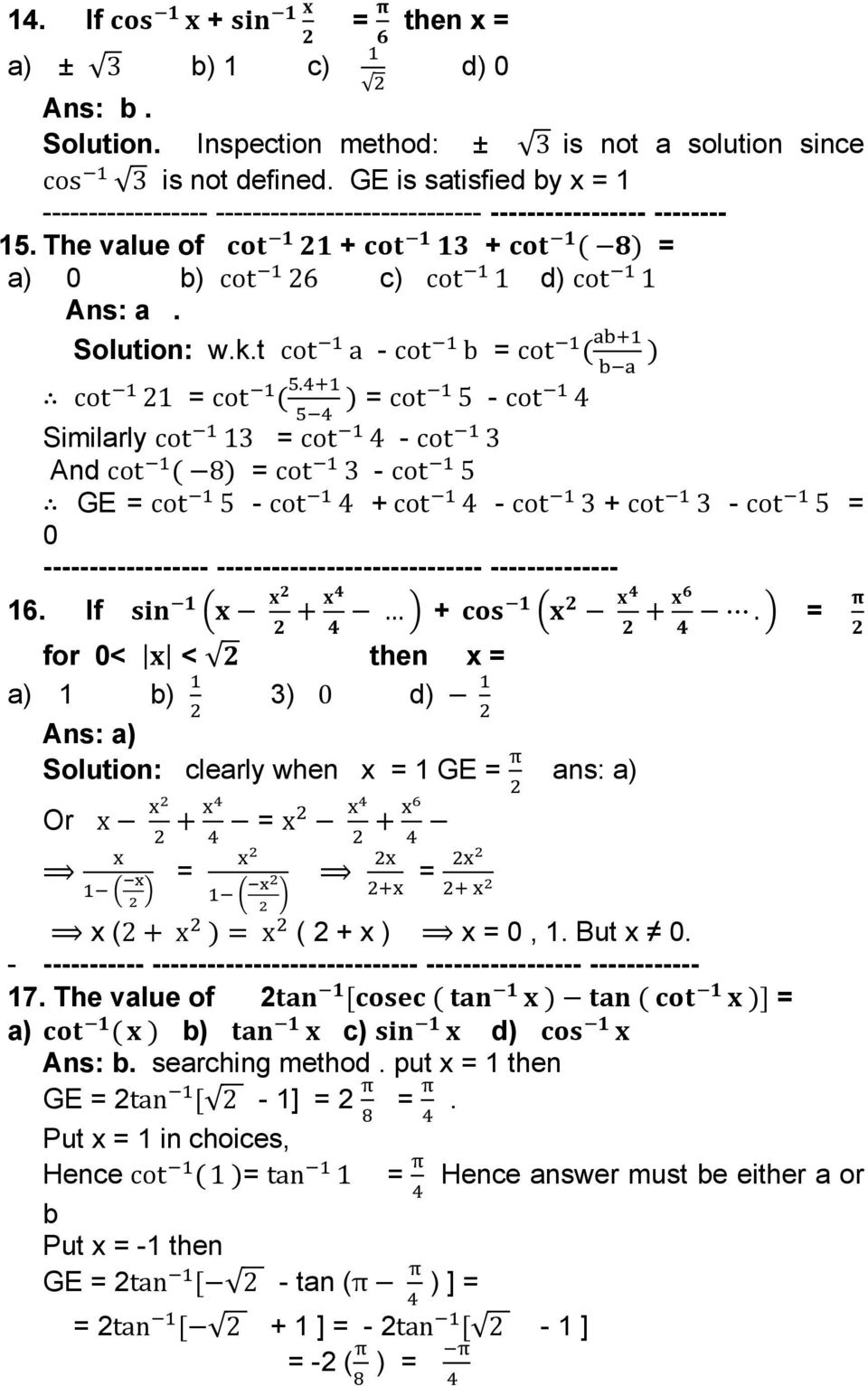


Inverse Trigonometric Functions General Solution Of Trigonometric Equations Pdf Dwrean Lhpsh



Ncert Solutions For Class 12 Chapter 2 Exercise 02 2 Inverse Trigonometric Functions
10 Show f (x, y) = (x 2 y 2) sin (1 (x 2 y 2)) for (x, y) 6 = (0, 0) and f (x, y) = 0 when (x, y) = (0, 0) is differentiable everywhere but has unbounded partial derivatives near (0, 0) Proof Let f (x, y) = (x 2 y 2) sin (1 (x 2 y 2)) for (x, y) 6 = (0, 0) and f (x, y) = 0 when (x, y) = (0, 0) is differentiable everywhere but has23/10/ · Question 13 If x = 2 sin2𝜃 and y = 2cos2𝜃 1, then find x yNow, x y = 2 sin2𝜃 2 cos2𝜃 1 = 2 (sin2𝜃 cos2𝜃) 1 Putting sin2𝜃 cos2𝜃 = 1 = 2 × 1 1 = 2 1 = 3 Show More CBSE Class 10 Sample Paper for 21 Boards Maths Standard Question 1 (Choice 1)16/03/19 · tan(2 cos^1(x)) I'm pretty sure 2 cos^1(x) is the same as cos2x, the doubles formula, but from there I'm completely lost



Partial Differentiation



If Sin Cot 1 X 1 Cos Tan 1x Then Find X
Y2xdydx Solution integral = Z 2 0 Z x x2 y2xdydx = Z 2 0 " y3x 3 # y=x y=x2 dx = Z 2 0 x4 3 − x7 3!Free math problem solver answers your algebra, geometry, trigonometry, calculus, and statistics homework questions with stepbystep explanations, just like a math tutorThe six trigonometric functions can be defined as coordinate values of points on the Euclidean plane that are related to the unit circle, which is the circle of radius one centered at the origin O of this coordinate system While rightangled triangle definitions allows for the definition of the trigonometric functions for angles between 0 and radian (90°), the unit circle definitions allow
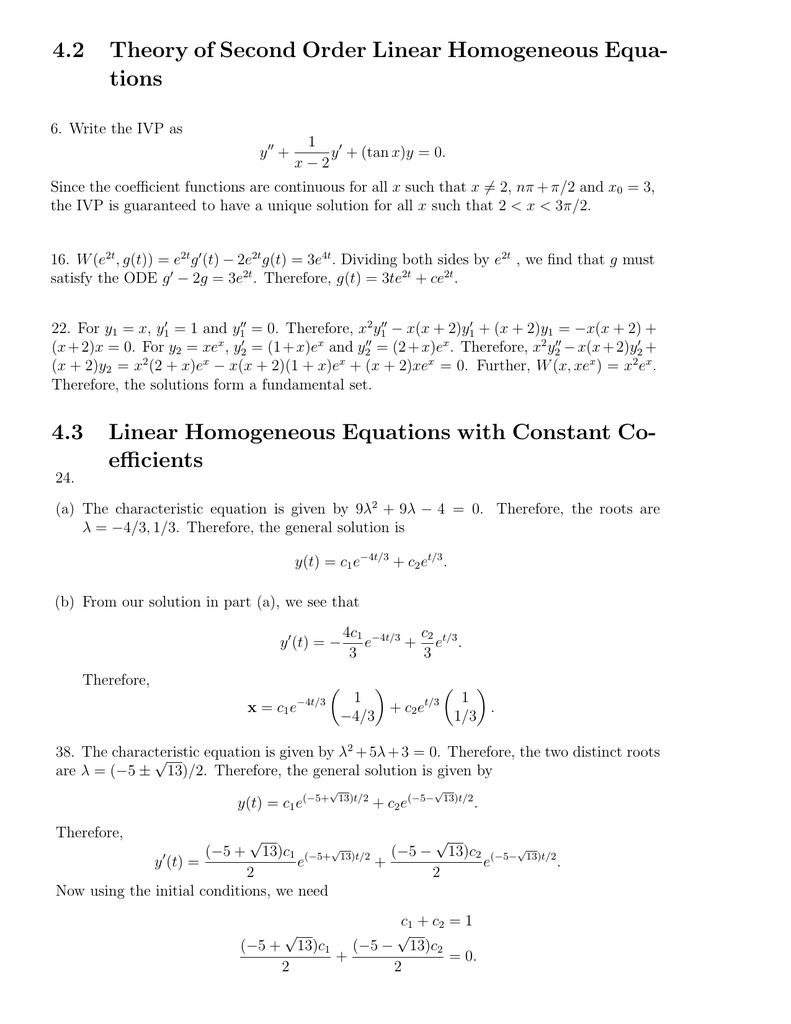


Solutions
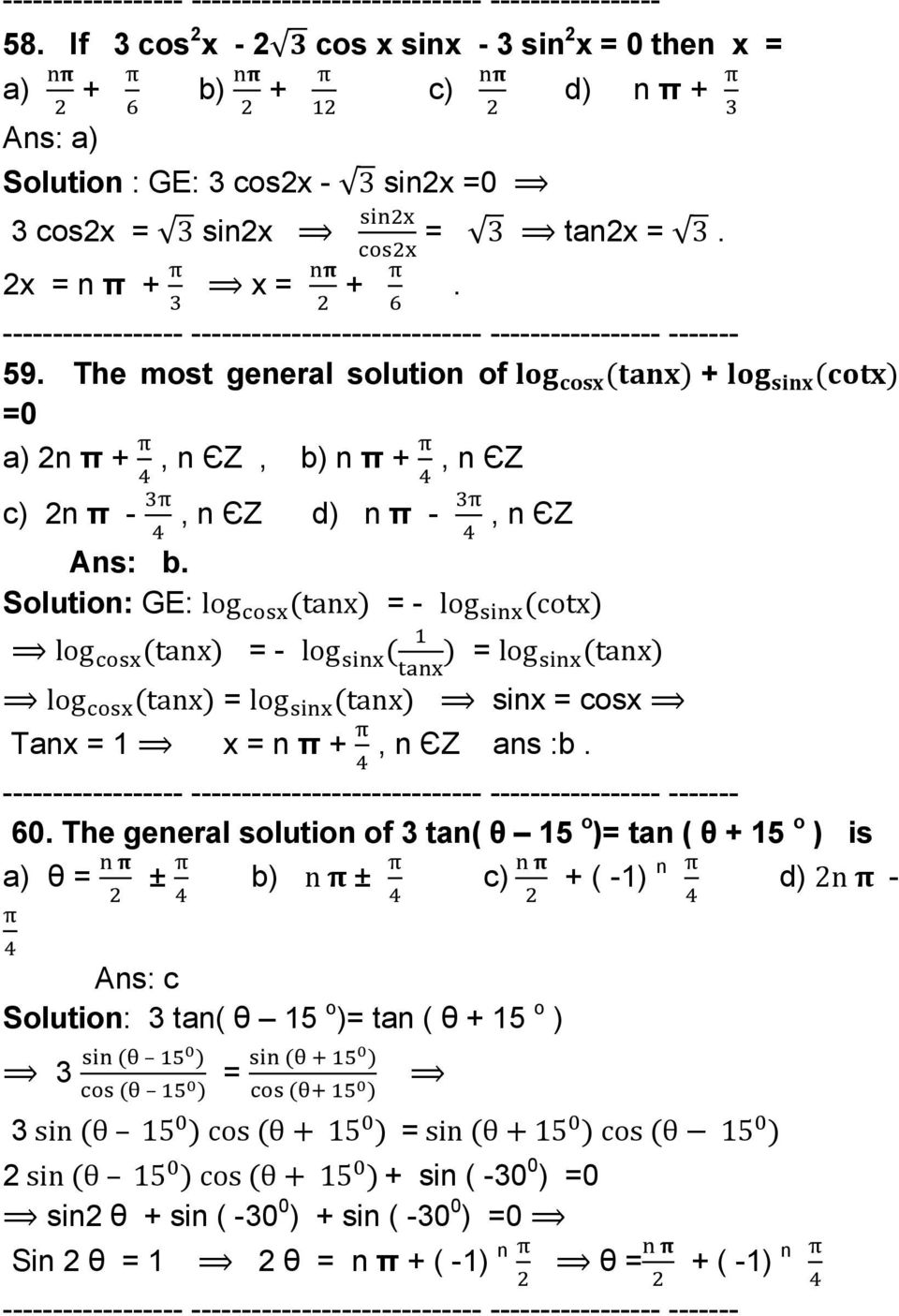


Inverse Trigonometric Functions General Solution Of Trigonometric Equations Pdf Dwrean Lhpsh
If cos1 ((x 2 y 2)/(x 2 y 2)) = tan1 a, then prove that dy/dx = y/x differentiation;31/03/17 · cosy = (1−x²)/(1x²) cosy(1x²) = 1−x² x² = (1−cosy)/(1cosy) = tan²(y/2) ∴ y = ±2tan⁻¹x and since y is not negative sign chosen is same as sign of x dy/dx = 2/(1x²) for x>0 and = 2/(1x²) for xIf `Cos^1 X/2Cos^1 Y/3=Alpha,` Then Prove That `9x^212xy Cosa4y^2=36sin^2a`



Rd Sharma Solutions For Class 12 Maths Chapter 4 Inverse Trigonometric Functions Exercise 4 10 Get Free Pdf



Y Tan 1 Sqrt 1 X 2 Sqrt 1 X 2 Sqrt 1 X 2 Sqrt 1 X 2 W H E R E 1 Ltx Lt1 X 0 Youtube
Solve your math problems using our free math solver with stepbystep solutions Our math solver supports basic math, prealgebra, algebra, trigonometry, calculus and moreApne doubts clear karein ab Whatsapp (8 400 400 400) par bhi Try it nowFree trigonometric identities list trigonometric identities by request stepbystep



Inverse Trigonometric Functions Ch 2



Inverse Trigonometric Functions General Solution Of Trigonometric Equations Pdf Dwrean Lhpsh
In Trigonemetry Laws and Identities, there are some rule that we will use to prove 1 / sec² (x) = cos² (x) * tan² (x) 1 = sec² (x) * sin² (x) cos² (x) = 1 * tan (x) = sin (x) / cos (x) We will prove from the Left Hand Side We know that sec²If cos (xyz) = 1 x^2 y^2 z^2, find partial derivative z/partial derivative x and partial derivative z/partial derivative y Get more help from Chegg Get 11 help now from expert Calculus tutors Solve it with our calculus problem solver and calculatorDx = " x5 15 − x8 24 # 2 0 = 32 15 − 256 24 = − 128 15 07 Example Evaluate Z π π/2 Z x2 0 1 x cos y x dydx Solution Recall from elementary calculus the integral R cosmydy = 1 m sinmy for m independent of y Using this result



Example 6 If Cos 1 X 2 Y 2 X



Ex 2 2 13 Inverse Trigonometry Tan 1 2 Sin 1 2x 1 X2



If Log X 2 Y 2 Tan 1 Yx Then Prove That Dydx X Yx Y



Solve For X 3sin 1 2x 1 X2 4cos 1 1 X2 1 X2 2tan 1 2x 1 X2 Pie 3 Brainly In



Ib Math Hl Oxford Course Companion Answers Pages 101 150 Flip Pdf Download Fliphtml5



Ex 2 2 13 Inverse Trigonometry Tan 1 2 Sin 1 2x 1 X2



Preview Cambridge International As And A Level Pure Mathematics 2 3 Coursebook By Cambridge University Press Education Issuu
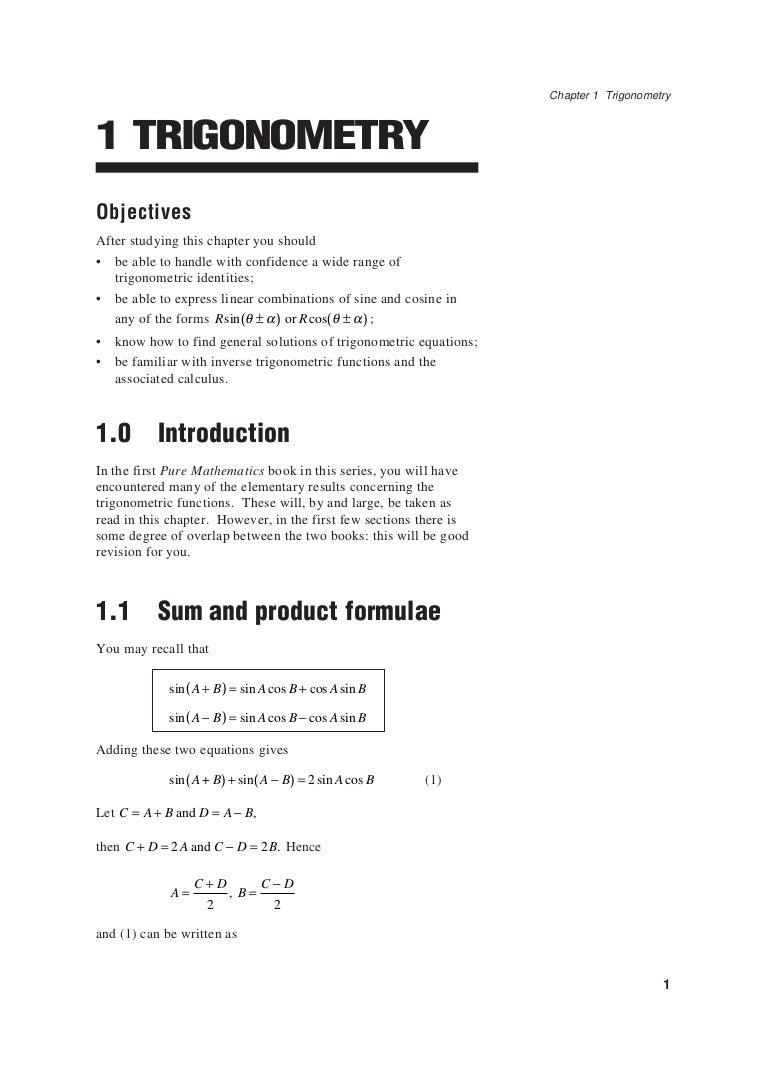


1 Trigonometry Further Mathematics Zimbabwe Zimsec Cambridge



Ex 2 2 15 If Tan 1 X 1 X 2 Tan 1 X 1 X 2 Pi 4
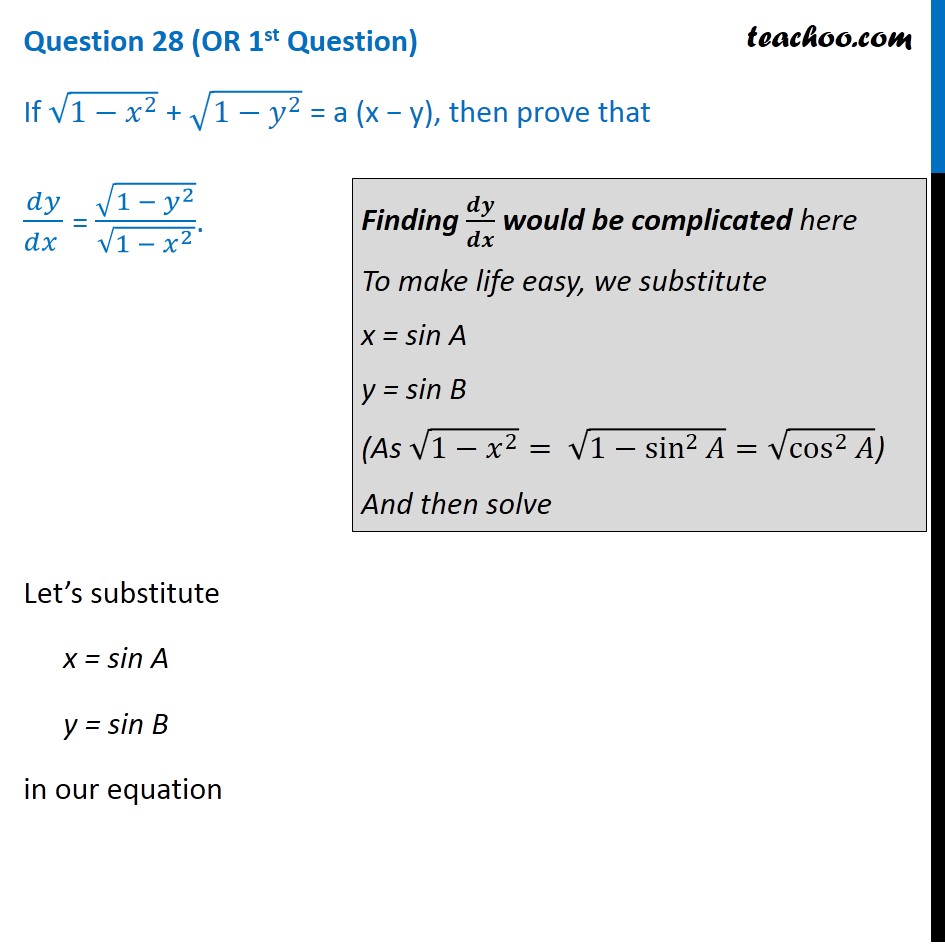


If 1 X 2 1 Y 2 A X Y Then Prove That Dy Dx



Trigonometry 6th Ed Part 2 By Josh Ramirez Issuu



If Sin 1x Cos 1x Pi 6 Then X Youtube



Cls Jeead 17 18 Xi Mat Target 1 Set 2 Chapter 3 Trigonometric Functions Sine
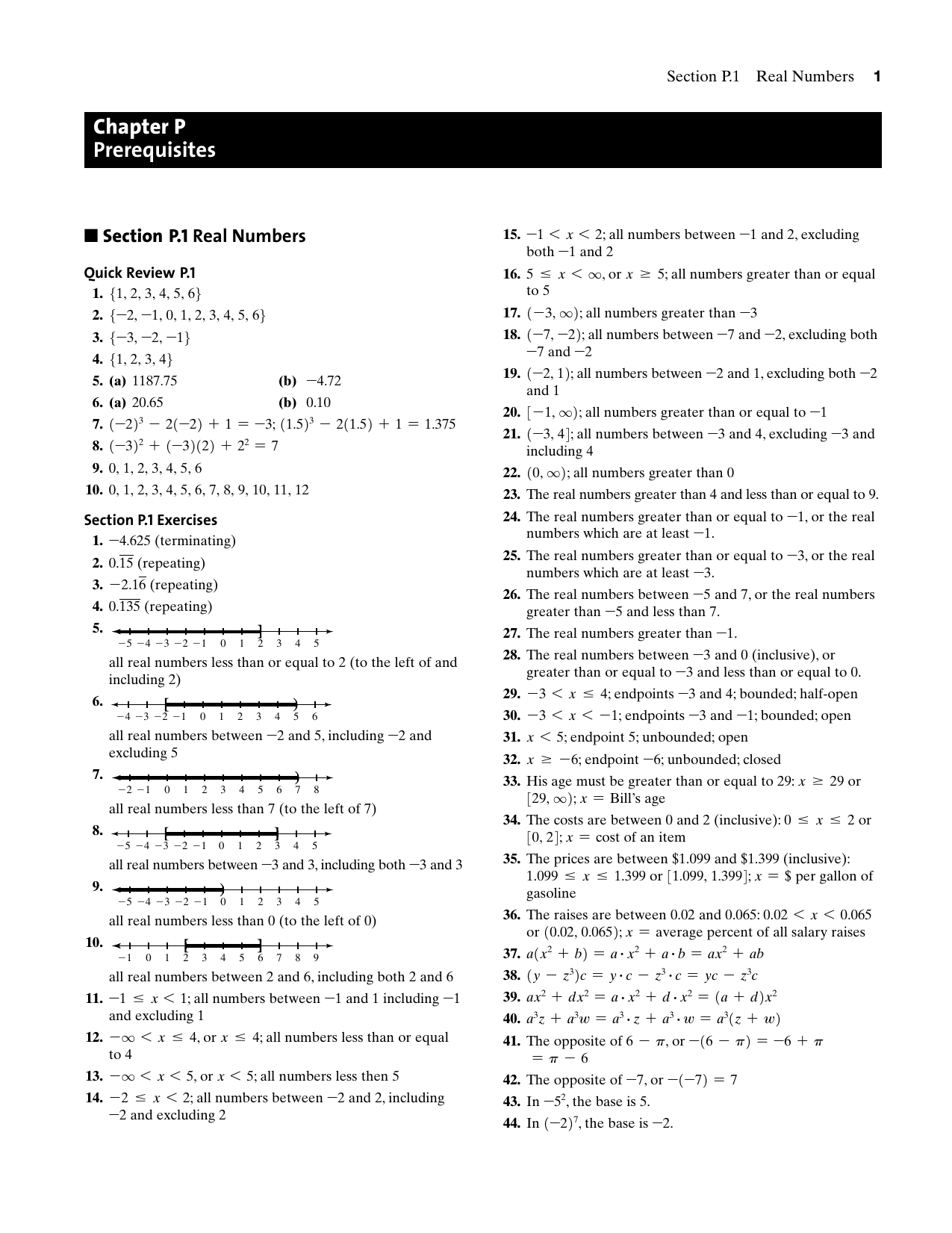


Chapter P Prerequisites Manualzz



Integration Trig Identities Ppt Download



Math 1 Arts Sci Pages 51 100 Flip Pdf Download Fliphtml5



Prove That 2 Tan 1 Sqrt B A Cos 1 A B A B Youtube


If Math Sin 1 X Sin 1 Y Sin 1 Z Pi 2 Math Then How Do You Prove That Math X 2 Y 2 Z 2 2xyz 1 Math Quora
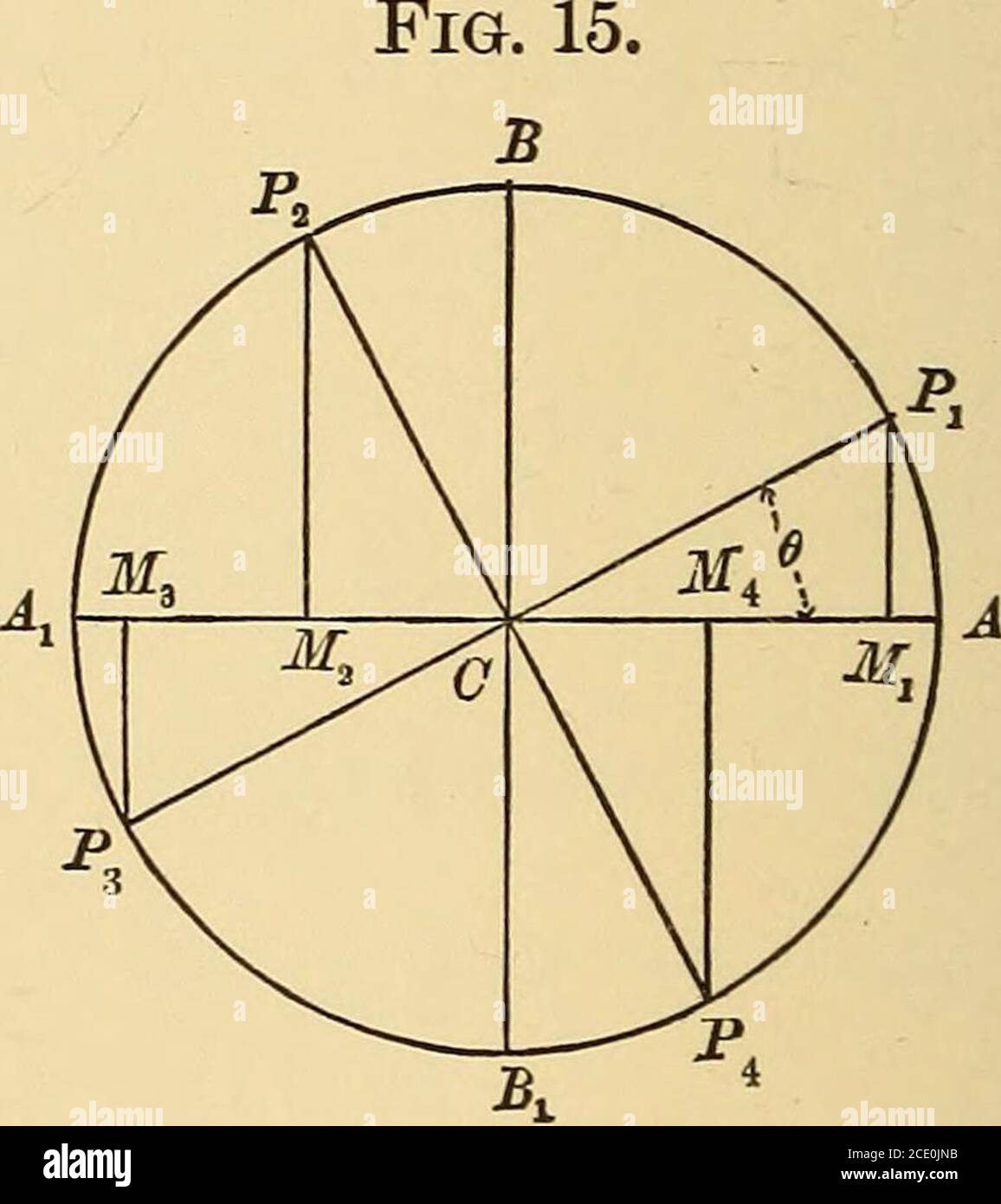


Elements Of Plane And Spherical Trigonometry Tan A 1 Sin2 D Tan 0 2 Sec A Cos 0 Cot 3 Cot2 X Tan2 A 4 Sin Y Cos
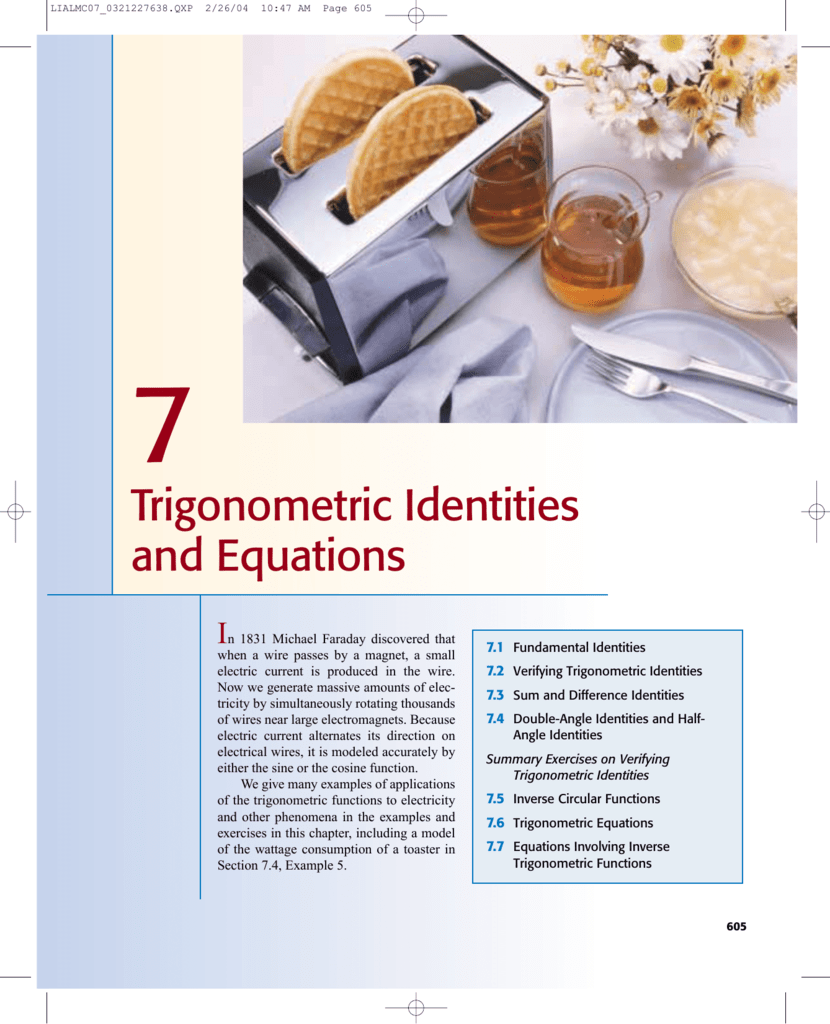


Trigonometric Identities And Equations



If Cos 1 X 2 Y 2 X 2 Y 2 Loga Then Find Dy Dx



1 Complex Numbers



If X Cosec Tan 1 Cos Cot 1 Sec Sin 1a And Y Sec Cot 1 Sin Tan 1 Cosec Cos 1a Then Prove That Maths Inverse Trigonometric Functions Meritnation Com
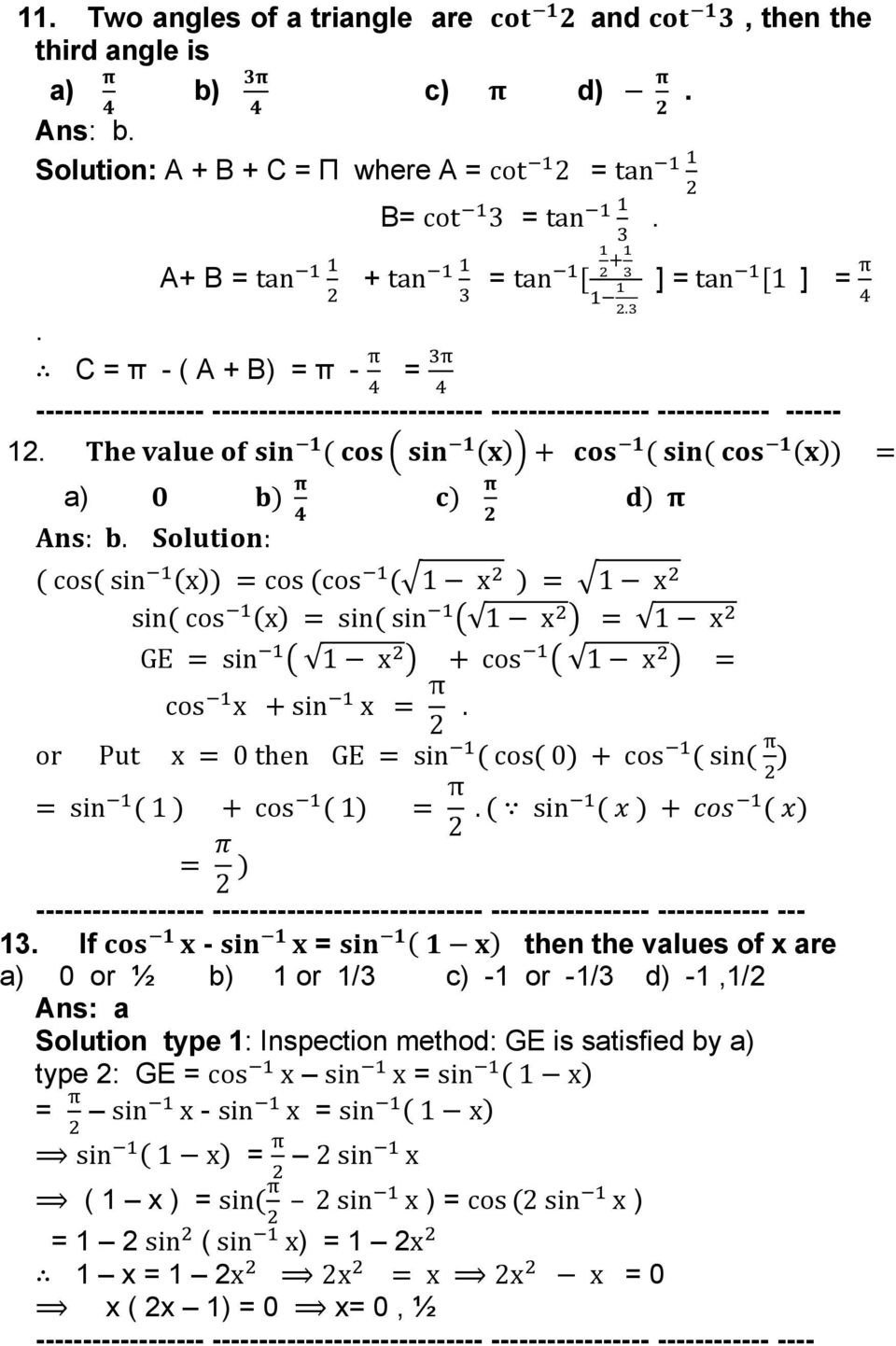


Inverse Trigonometric Functions General Solution Of Trigonometric Equations Pdf Dwrean Lhpsh
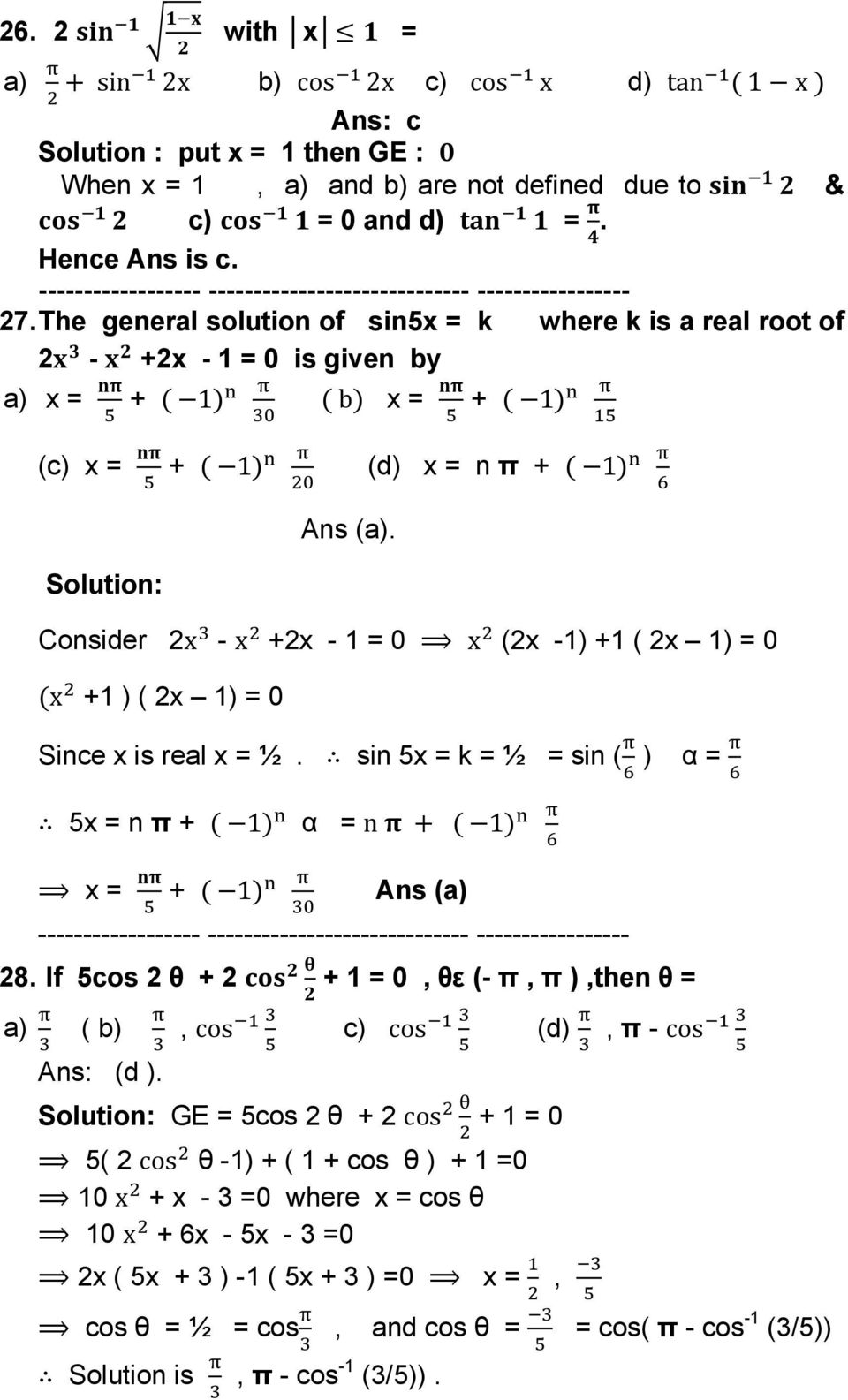


Inverse Trigonometric Functions General Solution Of Trigonometric Equations Pdf Dwrean Lhpsh



If Sin 1 X 2 Y 2 X 2 Y 2 Tan 1 A Then The Value Of



If Cos 1 1 A 2 1 A 2 Cos 1 1 B 2 1 B 2 2tan 1 X Then X Is Youtube



If Cos 1 X Cos 1 Y Cos 1 Z Pi Where 1 Lt X Y Z Lt 1 Then Find The Value Of X 2 Y Youtube



Math 1 Arts Sci Pages 51 100 Flip Pdf Download Fliphtml5


If Math Sin 1 X Sin 1 Y Sin 1 Z Pi 2 Math Then How Do You Prove That Math X 2 Y 2 Z 2 2xyz 1 Math Quora



If Cos 1 X A Cos 1 Y B A Br Show That X 2 A



Sin 1 1 X 2sin 1 X Pi 2 Then X Is Equal To A 0 1 2 B 1 1 2 C 0 D 1 2 Youtube



Ex 2 2 13 Inverse Trigonometry Tan 1 2 Sin 1 2x 1 X2



Inverse Trigonometric Functions General Solution Of Trigonometric Equations Pdf Dwrean Lhpsh
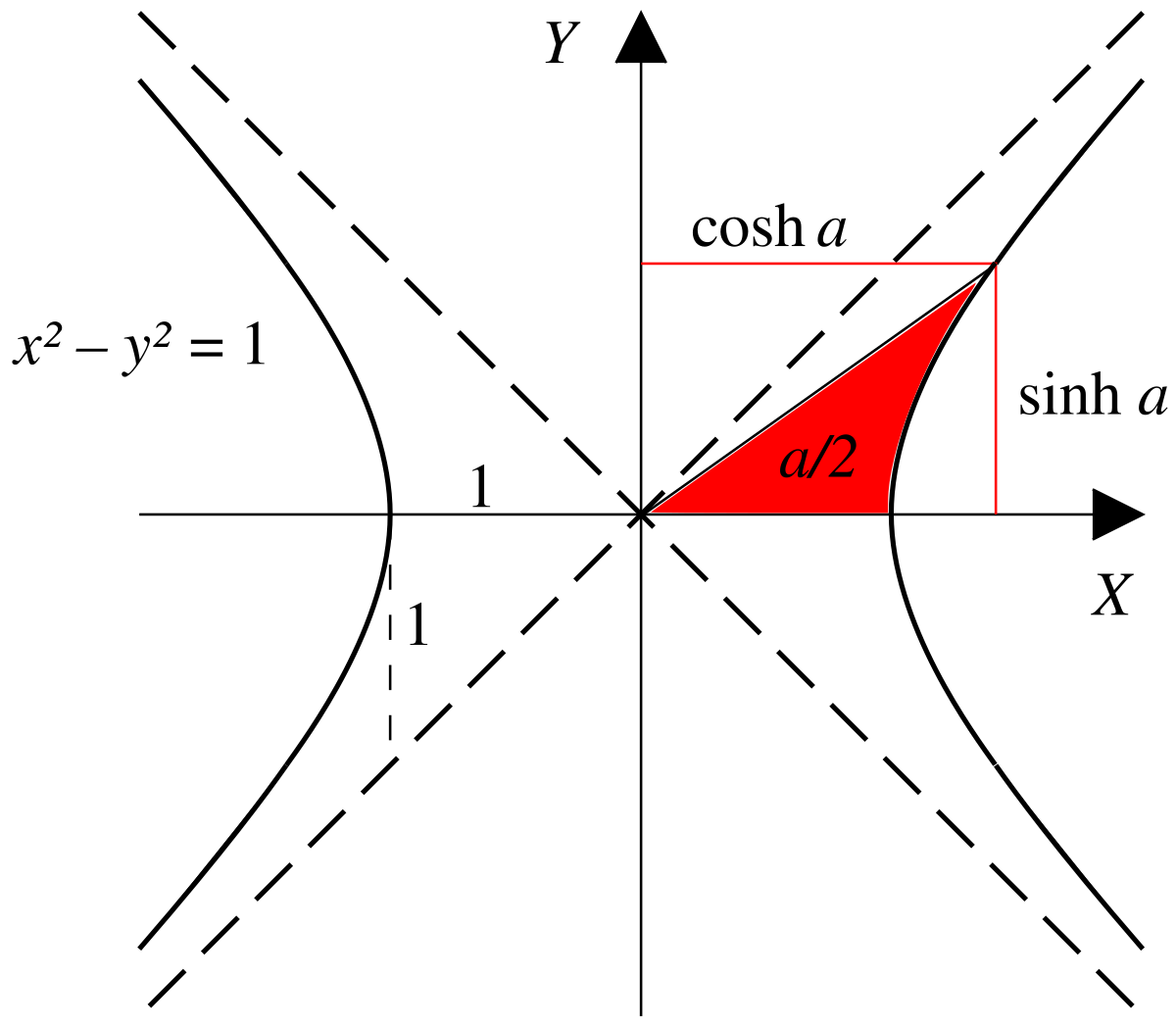


Inverse Hyperbolic Functions Wikipedia



Ex 2 2 15 If Tan 1 X 1 X 2 Tan 1 X 1 X 2 Pi 4



Transforming Sinusoidal Graphs Vertical Horizontal Stretches Video Khan Academy



Chapter 3001 Sine Trigonometric Functions
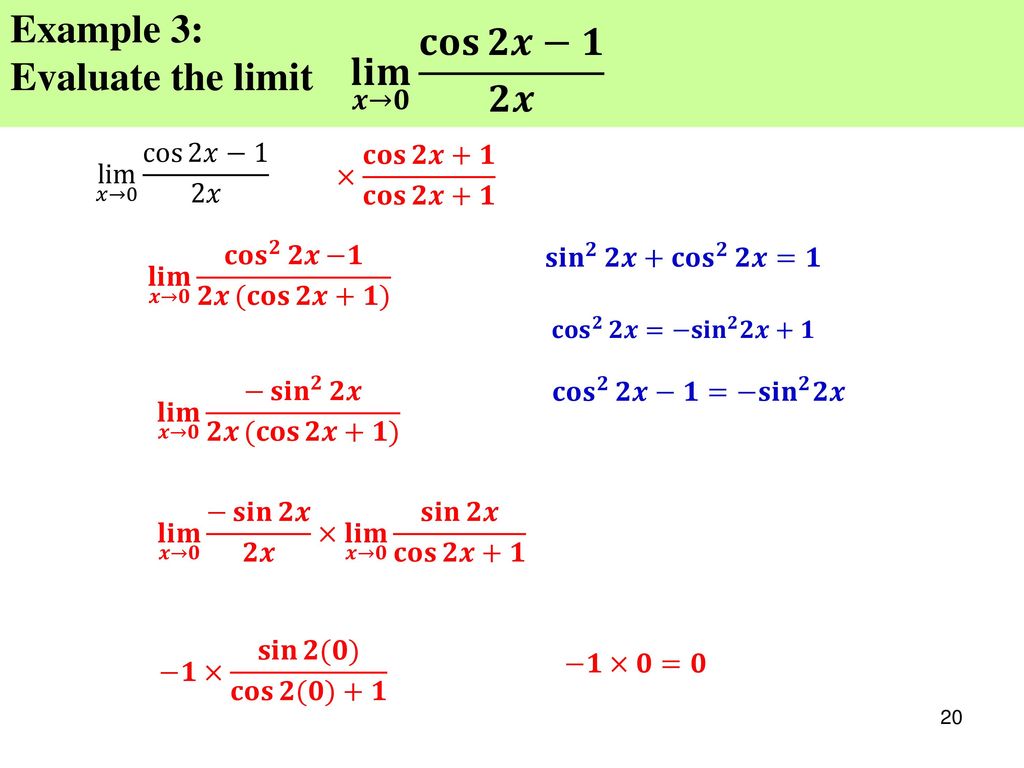


U3 L2 Limits Of Primary Trig Functions Ppt Download



Principles Of Communications Exercicios Resolvidos Principles Of Communications Docsity



Ex 3 3 10 Prove That Sin N 1 X Sin N 2 X Cos N 1 X



0 件のコメント:
コメントを投稿